Text
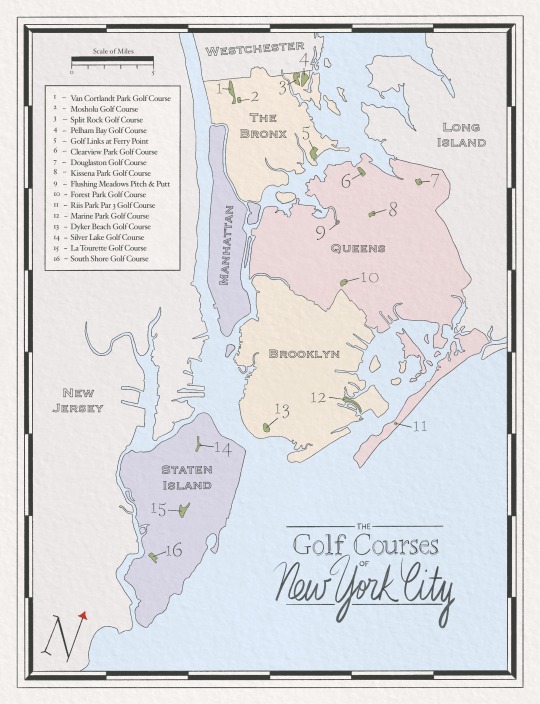
New York City Course Map
There are 16 public golf courses in New York City. Queens has the most courses (6), followed by the Bronx (5), Staten Island (3), and Brooklyn (2). There are no courses in Manhattan. This map depicts the outline of the property for each of the courseAs – the variation from site to site is striking.
0 notes
Text
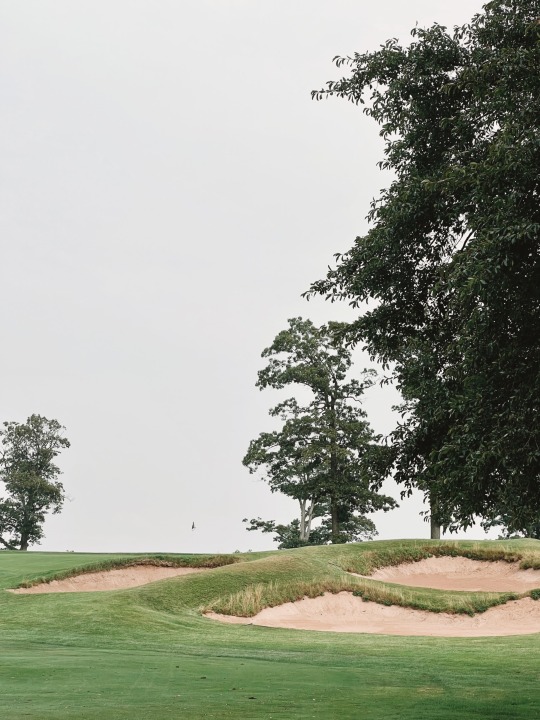

Rock Spring Golf Club
I’ve heard nothing but rave reviews about Rock Spring Golf Club. This year, I finally made the day trip from the City to West Orange, New Jersey to play.
The course, designed by the legendary Seth Raynor, is incredible. The greens are absolutely massive, and they are generally guarded by collections of deep, picturesque bunkers. So while the tee shots are mostly fair and forgiving, you have to hit precise approach shots to score well. Overall, the course is fun, interesting, and filled with compelling angles and memorable long lag putts.
Unfortunately, I played on a cloudy day so I couldn’t capture any photos of the New York City skyline, which is usually visible from the course. Hopefully next time!
#golf#golfcourse#newyork#nyc#publicgolf#municipalgolf#muni#photography#golfarchitecture#new jersey#Rock Spring#travel#day trip
1 note
·
View note
Text
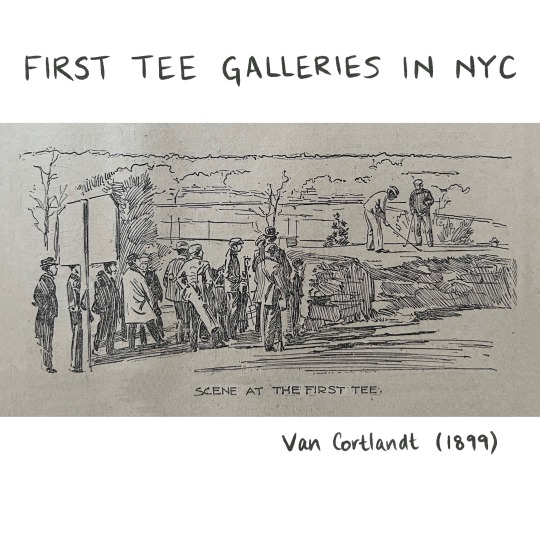
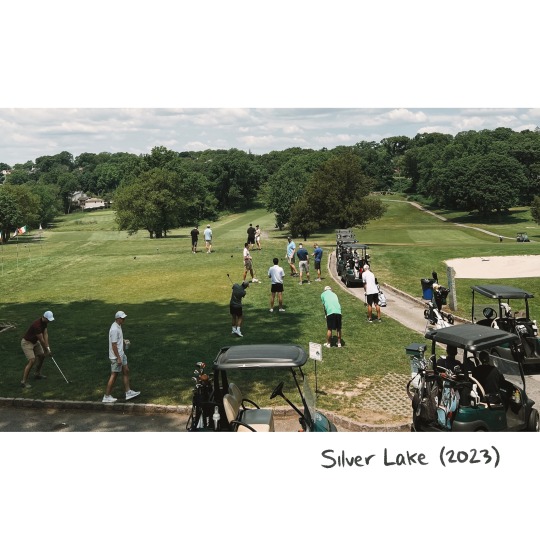



First Tee Galleries in NYC
Are you stressed out by galleries watching you tee off on the first hole? Over the past several seasons, I’ve noticed an uptick in the number of players waiting near the first tees of New York City’s courses. This isn’t anything new, though. Seen above is an illustration from an article in the New York Herald, dated October 22, 1899, showing approximately twelve people watching a player hit their first drive at Van Cortlandt. For comparison, I’ve also included photos of the crowds around the first tees at Silver Lake in Staten Island, Forest Park and Kissena Park in Queens, and Van Cortland in the Bronx (circa 2022). I always try not to worry about the onlookers – chances are everyone is going to struggle with their first shot since there are very few opportunities to warm up at most of the City courses.
#golf#golfphoto#golfhistory#nyc#bronx#van cortlandt#queens#kissena#forest park#staten island#silver lake#golfnyc#municipalgolf#muni#photography#history
0 notes
Text
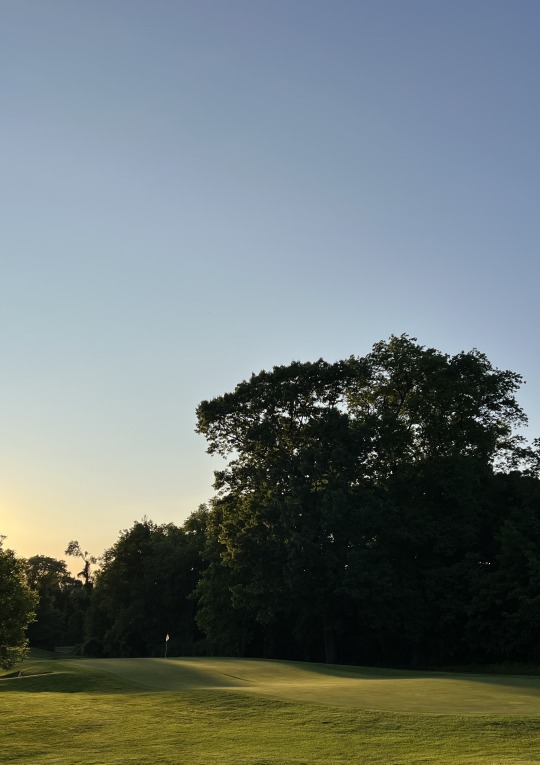
Biarritz at Mosholu
The undulation of the 9th green at Mosholu in the Bronx, an example of a Biarritz hole.
0 notes
Text




NYC Parks Logo
The New York City Department of Parks & Recreation has been using its iconic leaf logo since 1934. Because the City’s golf courses are located in City parks, the ringed leaf can often be found throughout the properties. Sometimes the logo is conspicuous, such as the large wooden leaf adjacent to the front doors of Marine Park’s clubhouse; other times, the logo inconspicuously fades into the background, such as the faded and peeling logo at the bottom of Forest Park’s small welcome sign.
Best of all, the City used to publish the logo front and center on course scorecards (see photo above, before the leaf was first circled beginning in 1978). The design was both minimal and bold: “City of New York, Department of Parks” printed on the front above the leaf. On the back: “U.S.G.A. Rules Govern.” Which course were you playing? You had to flip to the inside of the card to find out!
Beginning in the 1980s, the City began licensing management of its courses to private contractors. With this shift came a change in branding, and the Park’s leaf is now hard to find.
1 note
·
View note
Text



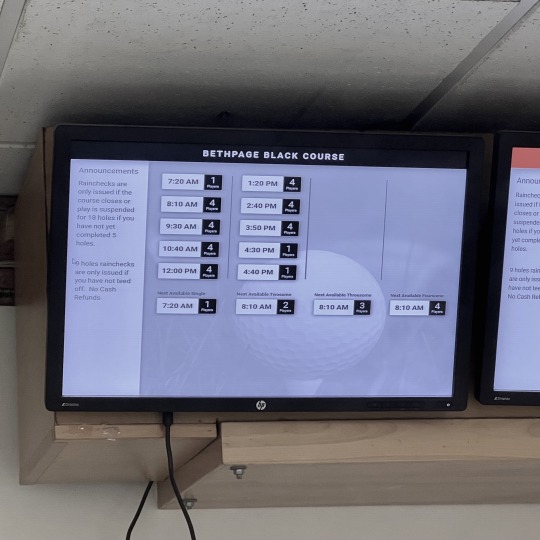

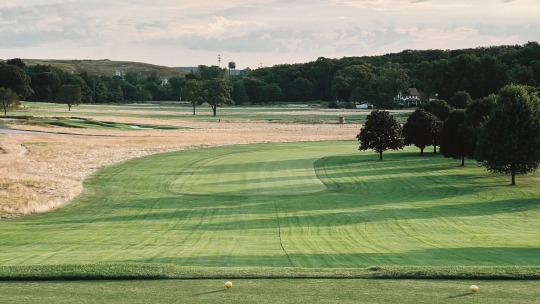
How to Camp Out for Bethpage Black
So much has been written about Bethpage Black, there's not much I could add about the course itself. Instead, this post describes the process for snagging one of the coveted tee times.
Booking a tee time online is really difficult. New York State residents can book tee times a week in advance. New times are added each night at 7:00 p.m., and in my experience, they're gone less than a second after they're posted. If you refresh your browser at just the right moment, you might get lucky ...
Otherwise, your next best option is to camp out at the course - the first hour of tee times on each of the five courses in the park are held for campers. I've done this once on a Friday in mid-August in 2022. If you're planning to give it a try, please note that I was playing as a single in the middle of the summer; the timing of your experience may be very different than mine depending on how many people are in your group and the season (the sun may rise earlier or later, which could impact when things happen).
I arrived at the course at 4:30 a.m. and parked in line. I thought I would be there in plenty of time, but it turns out 83 people arrived before me! My understanding is that people actually start lining up the night before, so if you're going with a group, you'll probably need to arrive way earlier than I did. Around 5:00 a.m., a park staff member came and handed out tickets to each person in each car in line. After I got my ticket (#84), I headed to the clubhouse and waited for my number to be called. When I arrived at the check-in counter, one spot was still available for the first tee time of the day (7:20 a.m.)!
One final thought - if you want to play the Black course, but you don't get a good spot in line, don't necessarily lose hope. Many people in line aren't there to play the Black course, so you never know what will happen when you’re called. When my number was called, there were still times available for all group sizes.
1 note
·
View note
Text
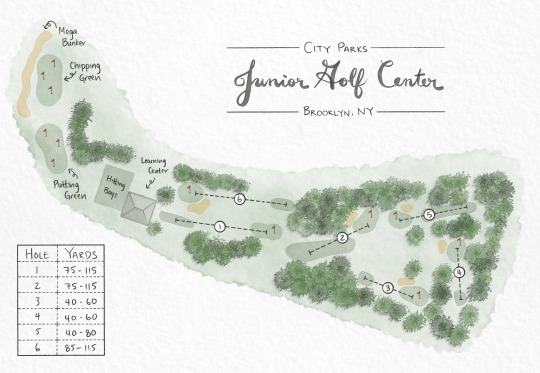




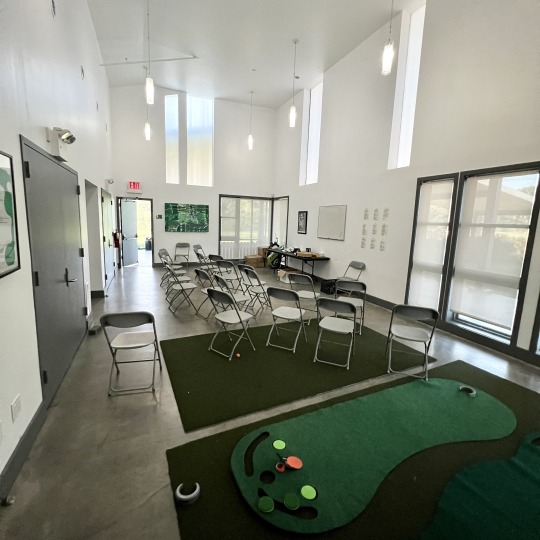

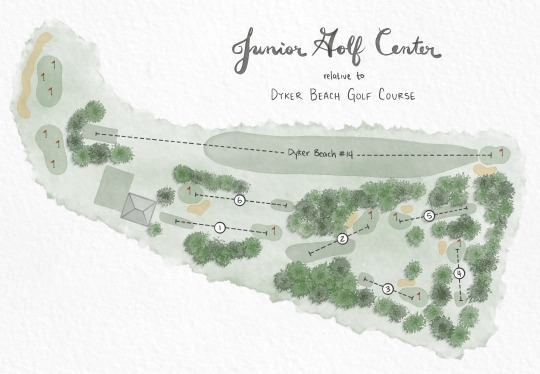
CityParks Junior Golf Center
Last year, I had the opportunity to visit the only public course in Brooklyn that I've never played - the CityParks Junior Golf Center. If you've ever played Dyker Beach Golf Course, you may have noticed the Junior Golf Center's 6th hole behind a chain-link fence that runs along the edge of Dyker Beach's 14th hole.
Simply put, the Junior Golf Center is fantastic. The facility includes a 6-hole golf course with holes ranging from approximately 40 – 115 yards; massive putting and chipping greens, including an enormous practice bunker surrounding the latter; numerous covered hitting bays; and a clubhouse learning center. The Center is open to juniors ages 6-17, and instruction and academies are available free of charge. Check the Center's website for more information about how to register.
The clubhouse includes a list of all the holes in one made at the course since 2010 – 42 in total! I wonder how many will be added to the list in 2023?
#golf#golfcourse#newyork#nyc#publicgolf#municipalgolf#juniorgolf#muni#nycgolf#golfart#golfcourseart#nycgolfcourses#golfarchitecture#brooklyn#juniorgolfcenter#cityparks
0 notes
Text

NYC Skyline as Seen from Kissena
A fantastic sunset over the 2nd green at Kissena Park Golf Course with the Manhattan skyline visible on the horizon.
#golf#golfcourse#newyork#newyorkcity#nyc#publicgolf#municipalgolf#muni#nycgolf#nycgolfer#newyorkcitygolfcourses#nycgolfcourses#golfarchitecture#golfart#photography#golfphotography#lovegolf#queens#kissena#sunset#skyline#manhattan
1 note
·
View note
Photo


CityParks Junior Golf Center - Hole 4
Last year, I posted about two holes in New York City that are strategically similar to the 12th hole at Augusta National. This follow-up post includes one additional hole that presents similar challenges – the 4th hole at CityParks Junior Golf Center. A bunker long and left of the green gathers pulled approach shots that fly too far. The hill to the right of the green kicks pushed approach shots that come up short into a former bunker area. And because the green angles from front left to back right, players must hit precise tee shots to get close to the pin.
#golf#golfcourse#newyork#nyc#publicgolf#municipalgolf#muni#nycgolf#golfart#golfcourseart#nycgolfcourses#golfarchitecture#brooklyn#juniorgolfcenter#themasters#augustanational#ANWA
0 notes
Photo


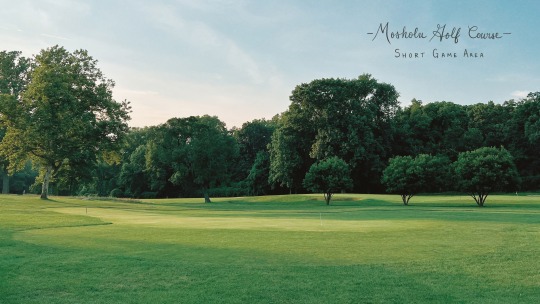


Three Places to Practice in Three Different Boroughs
In New York City, I’ve found it’s a lot harder to practice golf than it is to play golf. To that end, I’ve compiled here a list of three places to practice in three different boroughs. This post is not meant to address the City’s driving ranges, but rather the practice facilities that are available at some of the City’s courses.
In Brooklyn, Marine Park Golf Course has a driving range (approximately 175 yards long) as well as dedicated greens for putting and short game. I especially like the chipping and pitching area, where you can hit shots off grass up to about 40-50 yards.
In Staten Island, La Tourette Golf Course has an expansive driving range. At about 250 yards long, this seems to be a good place to practice longer clubs.
In the Bronx, Mosholu Golf Course also has a grass practice area. I typically head to the course when I’m looking to practice pitch shots of up to about 50 yards. I also visit when I need to work on my lag putting – the massive putting green (almost 9,500 sq ft) is about 50 yards long
If you’re looking to make a late summer push to play your best golf, one of these practice areas might be helpful to your success.
#golf#golfcourse#newyork#nyc#publicgolf#muni#nycgolf#golfphotography#nycgolfcourses#latourette#marinepark#mosholu#brooklyn#statenisland#bronx#municipalgolf
0 notes
Photo
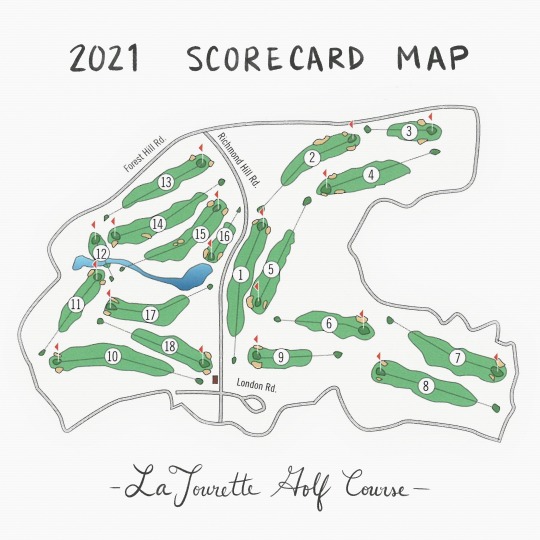
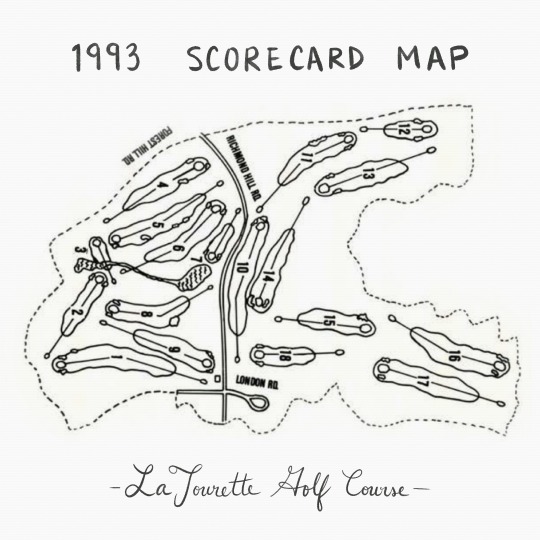
LaTourette Course Routing 2021 vs. 1993
Yesterday’s post addressed an interesting connection between Earl Woods, Tiger Woods, and the 10th Hole at LaTourette Golf Course in Staten Island. While researching for that post, I learned that the front nine holes and back nine holes at LaTourette were flipped sometime between 1993 and 2021. What Tiger’s Dad described to the New York Times as the first and ninth holes, are now the tenth and eighteenth holes. It would be interesting to know the reasoning for the change.
#golf#golfcourse#newyork#nyc#publicgolf#municipalgolf#muni#nycgolf#golfart#golfcourseart#nycgolfcourses#golfarchitecture#statenisland#latourette#tigerwoods#tiger
0 notes
Photo

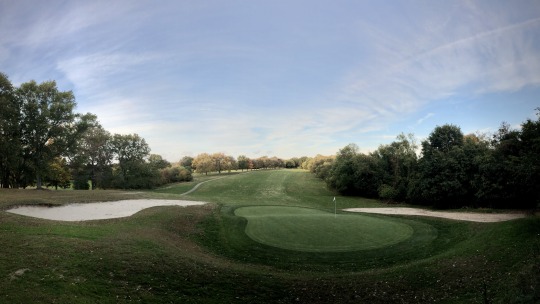

LaTourette Golf Course - Hole 10
It seems to be generally well known that Tiger’s Dad, Earl Woods, first took up golf at Dyker Beach while he was stationed at Fort Hamilton in Brooklyn. However, it was the 10th hole at LaTourette Golf Course in Staten Island that ultimately left the most lasting impact on Mr. Woods’ game.
The 10th hole is a straightaway par 5 measuring 519 yards from the back tees. There isn’t much trouble to be found, but a tee shot that is severely left will go out of bounds. A tee shot hit far to the right will land safely in the adjacent 18th fairway, though the second shot will likely be blocked out by a row of trees separating the 10th and 18th holes.
Prior to the 2002 US Open at Bethpage Black, Mr. Woods spoke with The New York Times and described one memorable experience playing the 10th hole. He said he “hit a big drive but it sliced over into the [18th] fairway,” whereas his elderly playing partner “blooped it down the middle.” He continued, “I was all over the place while she went bloop, bloop just short of the green. She chipped over a bunker to 6 inches for her par 5, then I two-putted for a 9. That's when I learned this game was all about accuracy over length.''
Mr. Woods stated that the 10th hole was where his “whole golf philosophy developed,” a philosophy he would later share with Tiger. He explained that “until [Tiger] was 13, he used a 3-wood or a 1-iron. I taught him the lesson I learned at LaTourette, that the best club off the tee is the one you can hit in the fairway.”
Tiger would most famously employ his Dad’s lesson at the 2006 Open Championship at Royal Liverpool, where he hit his driver only once during all four rounds. The R&A would later describe Tiger’s performance as “an imperious display of strategic links golf” and a “masterclass in long and mid-iron play.” As Tiger (hopefully) returns to competition in the upcoming Open Championship at St. Andrews, pay attention to his club selection off the tee. To the extent he tends to lay up more often than other competitors, it’s interesting to think that his strategy might have its origins in New York City municipal golf.
#golf#golfcourse#newyork#nyc#publicgolf#municipalgolf#muni#nycgolf#golfart#golfcourseart#nycgolfcourses#golfarchitecture#statenisland#latourette#britishopen#theopen#standrews#tigerwoods#tiger
0 notes
Photo
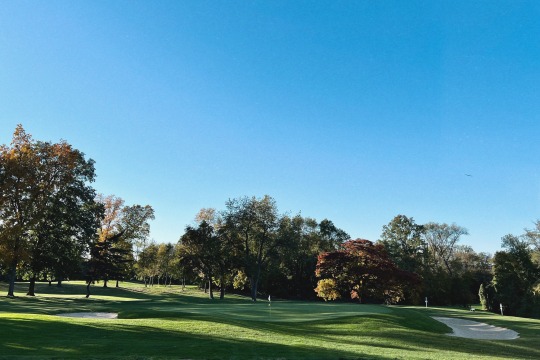
Mosholu - 8th Hole
The 8th green at Mosholu Golf Course in the Bronx from the right green-side rough.
#golf#golfcourse#newyork#nyc#publicgolf#municipalgolf#muni#nycgolf#golfart#golfcourseart#nycgolfcourses#golfarchitecture#bronx#mosholu#golfphotography
0 notes
Photo

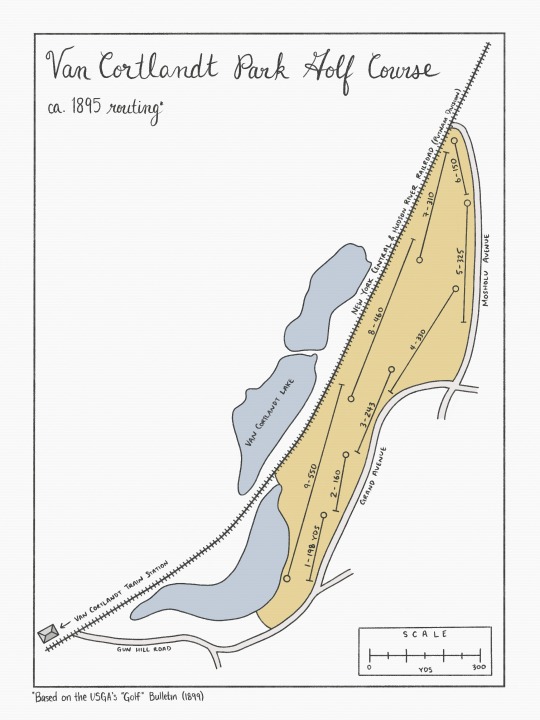


Did Van Cortlandt have a 700-yard Hole in 1895?
Of all the things I read about Van Cortlandt’s original layout in 1895, one fact stood out in particular – the original ninth hole was said to be 700 yards long! According to the USGA and R&A’s 2020 "Distance Insight Report," recreational women and men hit drives approximately 75-100 yards and 100-150 yards, respectively, circa 1900. Based on these data, I wondered if the 700-yard number was an exaggeration. Adding to this doubt, I found two contemporaneous descriptions of the original routing that appeared inconsistent as to the length of the final hole.
The routing of the original nine holes at Van Cortlandt roughly formed an upside-down “U” shape (see diagrams above). Holes eight and nine, which ran end-to-end in the same direction for approximately 1000 yards, combined to form the final straight line of the “U”. Based on this design, there was a zero-sum relationship between the length of the two holes. In other words, if the ninth hole was really 700 yards long, the eighth hole could only be about 200-300 yards.
In November of 1896, "The Sun" newspaper published a detailed description of all nine holes at the course. With respect to number eight, listed as 246 yards in a map accompanying the article, the paper wrote: “A long driver should have a great chance from this tee, which is on a slight elevation. There are two of the dirt bunkers on the way to the eighth hole – one close to the tee, which will trap a hooked or pulled drive, and another one close to the green, which is not particularly dangerous. A good score would be a five.”
With respect to number nine, the paper wrote: “A long stretch of rolling turf, crossed by two stone walls and spotted by a dirt bunker near the green, is in view from the ninth tee. The hole is 700 yards, the longest in the United States. The Van Cortlandt record is said to be seven for this hole, which must have been done by clever golf. The drive, unless topped, should clear the first stone wall and a brassey shot come close to the second. Another brassey, or a full swing with a cleek, will get well over the second wall. Unless it goes to the right and into the lake or the tall grass on the bank the lie will be good. If the three shots averaged 180 yards each there will still be 160 yards to play. The attempt should be to get over the bunker, or by it, with either a brassey or cleek, which will leave a margin of three shots to make the hole in seven.”
In May of 1899, the USGA also published a description of each hole at the course in its official bulletin, "Golf." The article described how each of the original holes would be changed when the course expanded from nine to eighteen holes. The USGA’s report of holes eight and nine differs significantly when compared to the analysis in The Sun.
With respect to number eight, the USGA wrote: “The fifteenth – the present eighth – will have a cup bunker with extended ends, guarding the green, which, like its predecessor, will be moved some yards to the left. And, except that the ground to the right will be cleared, there will be no further changes.” The map accompanying the article lists the fifteenth hole as 460 yards. Nothing in the USGA’s description suggests that the eighth hole was only 246 yards long, or that the original hole would nearly double in length during the remodel.
With respect to number nine, the USGA wrote: “At the sixteenth – the present ninth – the sand bunker already spoken of at the sixth hole will trap pulled balls, while a crescent-shaped sand bunker in place of the present one, will guard the green.” The accompanying map lists the sixteenth hole as 550 yards. Nothing in the article suggests that the original hole was purportedly the longest in the United States at 700 yards, or that it would be shortened by more than 150 yards when the course was renovated, facts the otherwise detail-oriented author surely would have referenced.
It's difficult to compare the description in The Sun vis-à-vis the analysis by the USGA. Both articles appear to contain detailed and first-hand accounts of the original course layout. With no reason to doubt the credibility of either description, it makes it all the more confusing that the descriptions of the final two holes are so dramatically different in the two publications.
After reading through discussions on Golf Club Atlas, I have one theory about what could have caused the discrepancy between the publications. The two articles were published approximately two-and-a-half years apart. It’s possible that in the intervening years, the original nine holes were renovated. My hunch is that while the original 9th hole may have initially stretched 700 yards, it was significantly shortened to about 550 yards sometime between 1897 and 1899. While a 700-yard hole might sound exciting, given the distance players hit the ball at that time, it was likely a monotonous experience to actually play the hole (albeit with multiple rock walls serving as interesting obstacles).
If anyone has any information regarding the original 9th hole, please let me know. I’d love to find out if my hypothesis is accurate.
#golf#golfcourse#newyork#nyc#publicgolf#municipalgolf#muni#nycgolf#golfart#golfcourseart#nycgolfcourses#golfarchitecture#bronx#vancortlandt#usga
0 notes
Photo
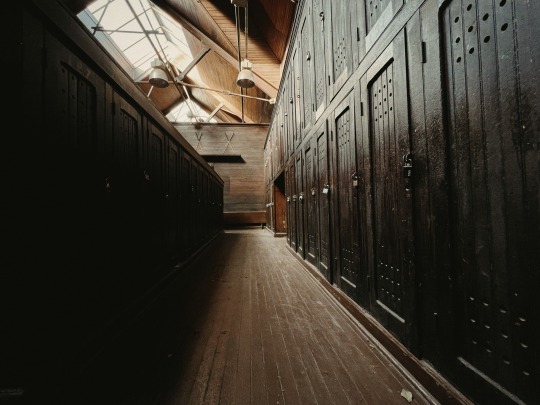
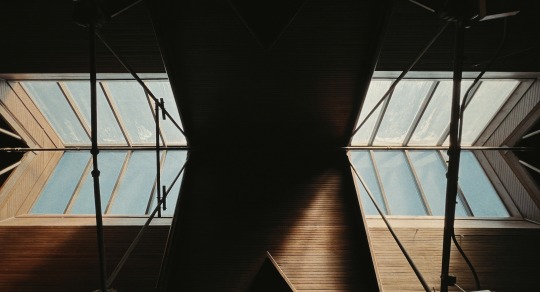
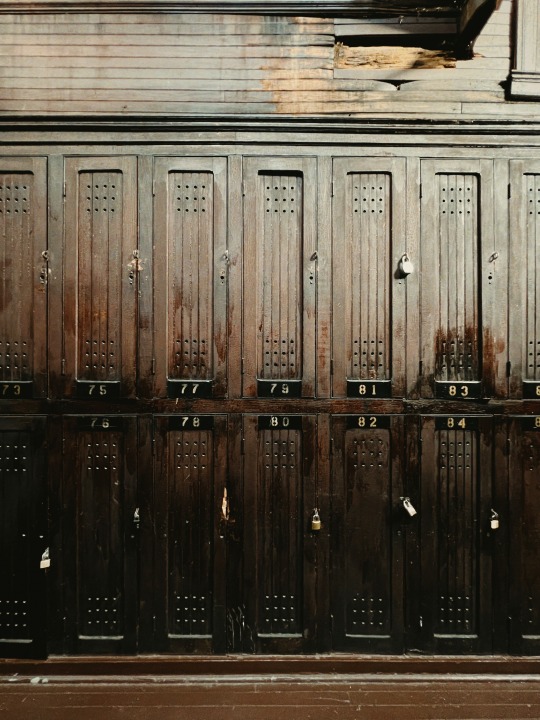
People always ask about Van Cortland’s locker room. Here are a few views of the historic wooden lockers. The room is located on the second floor of the clubhouse.
#golf#golfcourse#newyork#nyc#publicgolf#municipalgolf#muni#nycgolf#golfart#golfcourseart#nycgolfcourses#golfarchitecture#bronx#vancortlandt#locker room#wood
0 notes
Photo

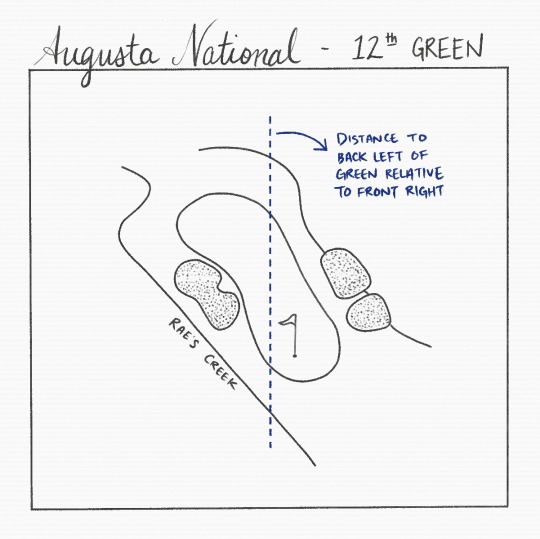



One of the most exciting shots players hit at the Augusta National Women’s Amateur and the Masters is the tee ball on 12. If you find yourself wondering how you might fare hitting the same shot, you can try playing strategically similar shots on a couple courses in the City.
To start, what makes the 12th hole at Augusta so compelling? Geoff Ogilvy provided an in-depth explanation on The Fried Egg podcast: “Taking the wind out … the genius, especially because most golfers are right-handed, is that short-right is in the water, and long-left is over the green. And a right-hander, when they miss it left, it goes long, and when they miss it right, it goes short.” The reason the hole plays so hard for right handers is because the tee box is placed to the left of the green, resulting in the right-half of the green being further away from the players: “The front-left edge … it’s probably 15 yards short of the front-right edge. And the back-left edge is probably close to the front edge on the right pin. So if you go to the left-hand side of the green, back edge will only just carry on the right.” The cumulative effect is that even safely aiming for the middle of the green is difficult: “Nicklaus says go over the bunker, left of the pin, and putt over. And that’s a great theory, but the middle of the green is shorter than where the pin is, so if you pick that line and hit it right of that line, you’re going to go into the water … But if you’re trying to go somewhere near the pin, and you pull it, you’re going to be somewhere on that hill or over the back.” The above diagrams of the 12th hole illustrate a few of Ogilvy’s points.
So where can you find similar tests in New York City? I think the approach shot to the par four third hole at South Shore Golf Course in Staten Island is the most similar. From the center of the fairway, the angles of the shot and green are comparable. The tee shot on the par three fifth hole at Marine Park Golf Course in Brooklyn is also somewhat similar. While neither hole has penalties as severe as Rae’s Creek, the placement of the bunkers and other trouble results in strategically similar challenges to the 12th hole at Augusta National. It’s not the same as playing in the ANWA or the Masters, but it’s fun to dream!
#golf#golfcourse#newyork#nyc#publicgolf#municipalgolf#muni#nycgolf#golfart#golfcourseart#nycgolfcourses#golfarchitecture#statenisland#southshore#brooklyn#marinepark#the masters#augusta national#augusta national women's amateur#ANWA
0 notes
Photo


I’m very excited to be back online for the 2022 season! While the courses are still recovering from the winter, spring golf in the City is quite beautiful. If you can get out and play sometime over the next few weeks, there’s a good chance you’ll spot some blooming magnolias, dogwood flowers (pictured here at Mosholu Golf Course in early June 2021), and cherry or apple blossoms (pictured here at Kissena Park Golf Course in late April 2021).
#golf#golfcourse#newyork#nyc#publicgolf#municipalgolf#muni#nycgolf#golfart#golfcourseart#golfphotography#photography#newyorkcitygolfcourses#nycgolfcourses#golfarchitecture#queens#kissenapark#bronx#mosholu#spring#flowers#blooming#blossoms#magnolia#dogwood#cherry blossom
0 notes